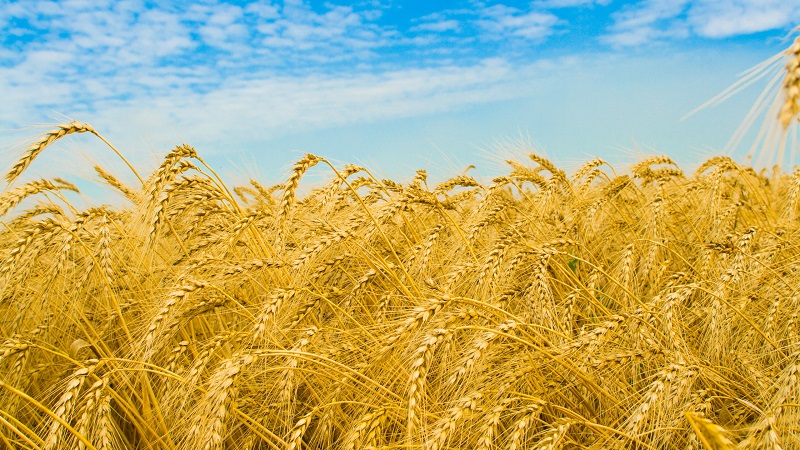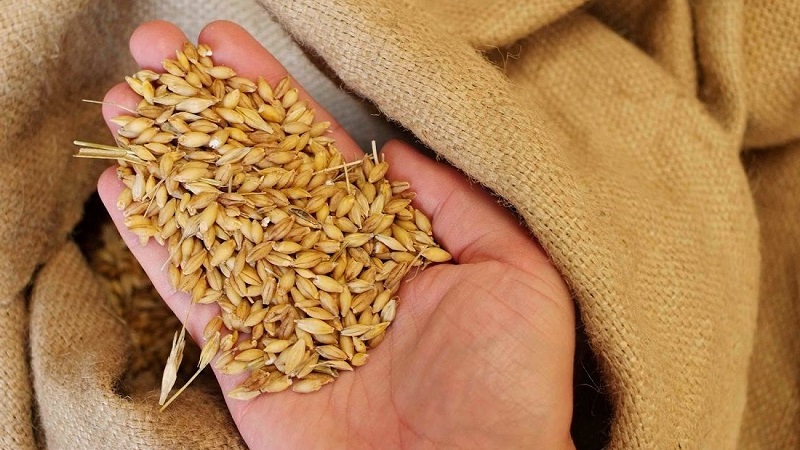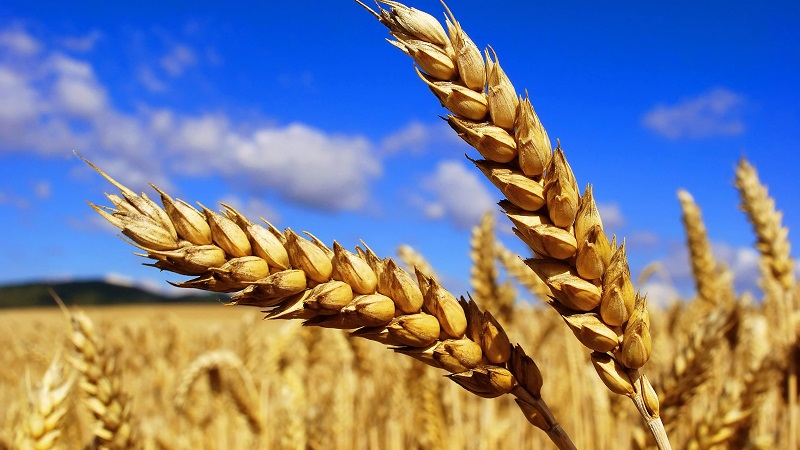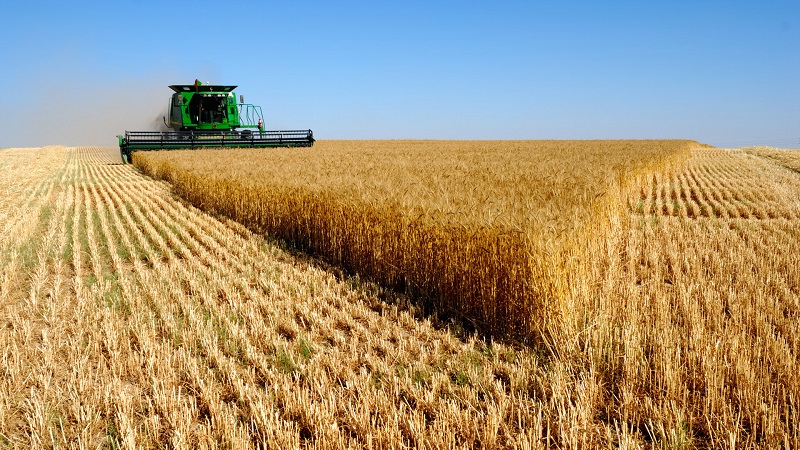What is the yield of wheat from 1 ha and what does it depend on
In Soviet times, during the "battle for the harvest", reports from the fields were transmitted every day, where and how many centners of wheat per hectare were harvested. Nowadays, such reports are published in the media much less often. Still, farmers and people associated with agriculture will find this information extremely useful.
From the article you will find out what the real wheat yield is hidden behind dry statistical numbers.
The content of the article
What is the yield of wheat per hectare
The yield indicator of any grain crop is calculated on average - on the farm, in the district, in the region, in the country. Moreover, until 1986, sown areas were taken into account, and after that - only harvested.
On a note! The yield of a particular wheat variety from 1 ha is determined only in experimental farms.
The current system gives more realistic numbers... For example, if 100 hectares were sown, and 80 hectares were harvested for various reasons, then when calculating the average indicator, the unharvested 20 hectares do not reduce the average yield per hectare.
Average indicators
Averages should be treated with caution... The common man's reasoning: 10 centners per hectare is really bad, 30-40 - acceptable, 50-90 - oh, cool!
But what about such statistics (for 2017): Ireland is in first place in terms of productivity - 95.4 c / ha, and in Russia in the same year - 27.2 c / ha? In this case, the assessment should take into account the size of the country and the diversity of climatic zones.
So in 2018, among the 10 main regions - grain producers in Russia, the Krasnodar Territory took the first place (61.5 c / ha), the second - the Kursk region (44.5 c / ha), the third - the Oryol region (40.8 c / ha) / ha), and the Omsk region closes the top ten (16.3 c / ha).
On a note! In the Altai Territory, in 2016, with an average yield of 11.2 c / ha, the Goodwill agricultural firm harvested 80 c / ha.
Yield record
Ireland set an absolute yield record in 2015 - 106.7 c / ha... And on private farms in the same year, an English farmer reached a record of 165.2 centners / ha.
In the regions of Russia, record rates are 80 and 100 centners / ha.
What does this indicator depend on?
What determines the indicator of wheat yield and why the average data should be taken critically
There are many factors to consider, here are the main ones:
- winter or spring wheat;
- solid or soft;
- growing region;
- climatic and weather conditions;
- soil composition;
- growing technology;
- crop rotation;
- cleaning technology harvest.
A thousand grains of spring soft wheat weighs 30-40 g, and the same amount of solid spring - 40-55 g.

Wheat varieties
New varieties of wheat are constantly being developed, and not always increasing yields is the main priority in breeding work. The technical note for the variety always indicates the ideal yield (this is how much wheat yielded on research fields under ideal conditions) and what you can really count on.
Wherein it is important to take into account the zoning of varieties... For example, if you sow seeds of a super-yielding variety from New Zealand in Yakutia, you should not expect them to give a record harvest.
Climatic and weather conditions
Wheat productivity is firstly influenced by climatic conditionswhich are relatively constant (although there is a lot of talk about climate change now, but it is a long process). Taking this factor into account, new varieties are developed and existing varieties are zoned.
Second, the weather conditions... Year after year does not happen, and ideal weather rarely happens: then return frosts, then drought, then, on the contrary, it rains without ceasing. Breeders who create new varieties, as well as agricultural technicians and agricultural engineers who are developing a strategy and tactics for field work, are called upon to cope with these factors.
The soil
The main share of wheat yield depends on the quality indicators of the soil. The earth must be saturated with substances useful for plants.
Thoughtless emasculation and excessive use of mineral fertilizers kill living soiland she will give birth less and less. This problem has already become global.
The number of stems depends on the quality of the soil.that one grain can give. The more stems - the more ears and the higher the yield.
Important! Speaking about how many hundredweight per hectare harvested, it is worth considering how much was sown. This is the only way to determine the real yield of any crop.
Soil revitalization can improve the situation by introducing various organic matter into it.
Compliance with the rules of crop rotation
Competent crop rotation can increase yields, and non-compliance - to lower it. In particular, the influence of predecessors must be taken into account.

Good predecessors for wheat:
- black steam (after it you can sow wheat in the same field for two years in a row);
- corn for silage (not on the cob);
- annual herbs;
- perennial herbs;
- leguminous crops.
Weeds are dangerous for wheatthat stifle it from the germination stage and prevent it from growing. Horsetails, sow thistles and creeping wheatgrass are considered especially malicious.
By the way! Most of all, weeds inhibit modern short-stemmed (intensive) varieties.
So, 10 shoots of creeping wheatgrass per 1 sq. m fields reduce yields spring wheat on average by 29%, 26 shoots - by 49%, from 60 - to 75%.
Correct growing technology
The end result depends on:
- how the field was prepared and plowed;
- what time they sowed;
- whether they were fed on time;
- whether treated for weeds and pests;
- Have you delayed cleaning.
Features of harvesting
You can also lose crops at the harvesting stage.... It is important to do this on time - when the grain is already ripe, but the ear has not yet had time to lay down.
Quality cleaning depends on technology - the new harvesters are capable of mowing even lodged grain without loss. And also from the skill of combiners.
Differences in the yield of spring and winter wheat
Winter and spring wheat differ in yield: in winter, the indicators are higher, and in winter - lower. This is due to the physiological characteristics of these crops.
The yield of winter at the exit can be several times higher than that of spring, but it is more demanding on soil and climatic conditions. In reality, most often the yield of winter is 15-20% higher than that of spring. This is provided that she survives the winter without loss.

How to increase wheat yield
So, there are several ways to increase wheat yield:
- grow suitable released varieties;
- choose varieties that are more productive and resistant to weather conditions, diseases and pests;
- observe agricultural practices;
- take into account weather conditions;
- monitor compliance with crop rotation;
- use reliable technique.
Conclusion
Wheat is the staple cereal in Russia and most other countries. The well-being of the entire population depends on its stable yield. For this reason, breeders do not stop working to harvest more grain from the same arable land.